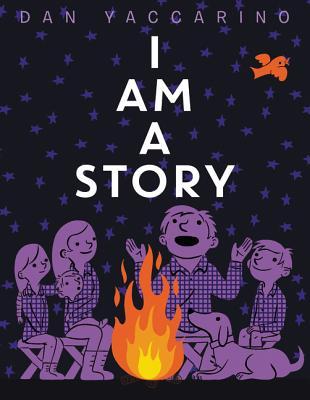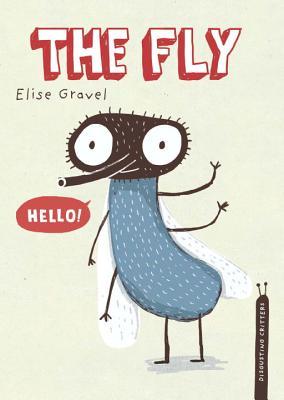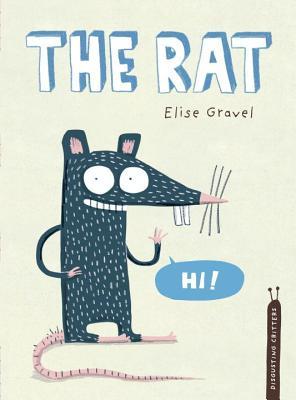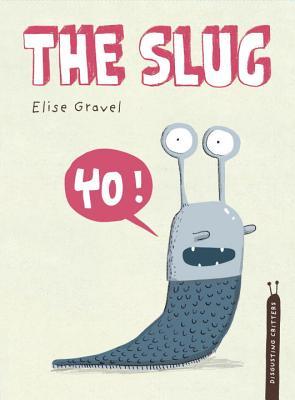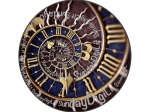Friday, September 16, 2016
Poetry Friday -- Everyday Miracle: A Septercet
Everyday Miracle
Watching caterpillars morph
from worm into chrysalis
never grows old. Starting small
(teeny-tiny, truth be told)
they adopt a growth mindset --
after egg, it's grow, grow, grow.
They change caterpillar clothes
as they thicken and lengthen.
Then comes the ultimate change --
undigested food is purged,
silk belt is spun, anchoring
caterpillar, who lets go
and leans into the process.
Unseen to observing eyes,
parts that were caterpillar
shuffle, shift, reorganize.
What once began as all crawl
will become fluttering flight.
©Mary Lee Hahn, 2016
The Ditty of the Month challenge at Today's Little Ditty, issued by Madam Jane Yolen, was to write a septercet, a form she invented in which each verse (as many verses as you want) needs to have three lines, each with seven syllables. It can be rhymed or not. The challenge was also (I just realized) to make your septercet feature reading and/or writing. Oops. Maybe mine is about reading the natural world.
Michelle hosts the Poetry Friday roundup this week at Today's Little Ditty.
Wednesday, September 14, 2016
The Power of Story
I Am a Story
by Dan Yaccarino
HarperCollins, 2016
review copy provided by the publisher
We've been looking closely at picture book dust jackets (inside and out), covers, and endpapers, thanks to #classroombookaday. I'm hoping the endpapers of this book will inspire thoughtful inferences about what we'll find between the covers. Will there be text that we can quote explicitly to support our thinking?
What will my fifth graders make of a book that chronicles the history of human story telling, from ancient oral story tellers around a fire under the stars to modern story tellers around a campfire under the very same stars?
Will they be in awe of their place in the course of human history as writers and tellers of stories?
What will they make of the little red bird who flies through all the places and times?
This book is making me think again about the TED Radio Hour episode I listened to recently, "The Act of Listening." Especially the parts about the power of Story Corps, and the man who invented it. Because what good is a story without a listener or reader?
Tuesday, September 13, 2016
Still Learning to Read: So Much More than a Single Test Score
This is one of a series of blog posts that continue the conversation around Still Learning to Read--teaching reading to students in grades 3-6. This series will run on the blog on Tuesdays starting in August 2016.
I love getting to know my students early in the school year. There is so much to learn and so many things to get to know about each child. The first six weeks of school is definitely not easy, but taking the time to get to know each student as a person and as a learner is so important.
In Ohio, we have a 3rd Grade Guarantee Law. No matter where you live, you are most likely living with some mandates that require an emphasis on standardized tests. When you are dealing with mandates and laws like these, it is easy to forget all of the things we know and understand about literacy and learning and to go through the motions of the paperwork required and to rely on standardized test scores alone. The test scores tell us something about a child, but they do not tell us everything we need to know to plan good instruction. I decided a few years ago that I had a choice as a classroom teacher. I try to do the best I can to meet the requirements of the law while working in ways that make sense for young children. It takes a bit of extra time and intentional planning but I know that meeting a child's needs requires more than a single test score.
In Ohio we give a state reading test in the fall and the spring. Districts also have the option to give alternate tests for kids to show what they know. Our district provides each teacher with the Developmental Reading Assessment and I always sit down with every child to chat about their reading in an informal Reading Interview. I also spend the first weeks of school taking anecdotal notes about things I notice during independent reading time, mini lesson time, and read aloud time.
Each time I assess a child (with a standardized or more informal assessment), I try to pull out the most important things from the assessment-the things that seems to be the most important thing to know about that child right now. Then I look across all of the assessments to notice patterns and ask myself questions like:
- Are there any outliers in the assessments? Something that doesn't fit the rest of the information?
- Does the child do better with long text or shorter text? Can he/she hold onto a story/idea of time?
- Are there patterns across strengths and weaknesses across assessments?
- How does this child define reading?
- Is this child an engaged reader?
- What strengths does this child have that can be built on?
- What is the one thing that seems to be most critical for this child to move forward as a reader?
To do this I use what I call an Assessment Web. I want to look across several pieces of information about my students in order to plan for instruction that matters for them. I can't look at a level or a test score or an area of weakness and know what to do or how best to support a young reader. Instead I need to look hard at all types of data and information to determine what is the most important next step for a child. In our book Day-to-Day Assessment in the Reading Workshop, I shared the way that I create an Assessment Web for each child. The Assessment Web lets me think about all the pieces of information I gather about a child as a learner during the first few weeks of school and for me, the web allows me to see how they all work together, without one being more important than the other. I often use this web to share with parents at conference time. My categories change a bit based on the assessments we are required to give or the patterns I see but overall my web usually looks something like this:
Some years, instead of an assessment web, I compile the data on a form that is on page 83 in the second edition of Still Learning to Read. This one is a bit easier and allows me to more easily look across grouping of students and patterns across the class. But it doesn't give me a single page on each student that I can use as the year progresses and add changes, updates, etc.
Of course, the form doesn't matter--it just helps me make it easier for me to look across multiple pieces of information on a child. In order 'to move forward with targeted instructional planning after these first few weeks of school, this step has always been critical for me. Since I started using a form like this over a decade ago, we've had new standards, new tests and new mandates. But the idea of the form continues to work for me as I try to look at all the data and information I have on a child in order to make the best instructional decisions possible for a child.
(You can follow the conversation using the hashtag #SLficuciaryTRead or you can join us for a book chat on Facebook that began this week by joining our group here.)
Our new edition of Still Learning to Read was released last week!
You can order it online at Stenhouse!
Monday, September 12, 2016
Early-in-the-Year Messages About Learning
There is no rushing the first few weeks of the school year. No matter how much I'd love to be in Week 8 right now with routines set and thoughtful conversations happening every day, I know that you can't rush community building. As hard as it is to establish routines, there is nothing like these first few weeks of school--getting to know students, watching them get to know each other, and listening in on these beginning conversations.
I can never quite pinpoint exactly how things evolve in the classroom--how kids get from where they are at the beginning of the year to where they are at the end of the year. I don't really have a set of lesson plans that helps to build talk early in the year. I don't really believe in those "First 20 Day" planning guides. But I am very intentional about my planning and try to be responsive to each new group of students. Each group comes in with different expectations as learners and I usually take my cue from them on where to do. By May, I am always so amazed by my students' thinking and growth but they are not as comfortable talking and sharing early in the year so I spend a lot of time planning things that give them important messages and experiences about learning.
The thing is, lots of these things don't happen in Reading Workshop. In Read Aloud and in minilessons, we are learning to have conversations around books. But it seems to be that it is the conversations that we are having during other times in the day that also help build the conversations we have as readers. In a self-contained classroom, nothing stands alone. Somehow, conversations in reading are possible because we spend time throughout each day thinking about learning and thinking and talking. The conversations overlap and talk starts to get better each day in the classroom in all areas.
We Learn When We Think Together
We mention in our book the idea of Thinking Partners. A board in the front of our classroom has a heading "Who Are You Thinking With Today?". Below are 2 sets of individual photos of the students in our class. I use this to quickly assign partners for various things when needed. Early in the year we talk about how you learn different things when you think with different people. We've done partner talk in all areas learning how to turn and talk, sit "knee-to-knee, eye-to-eye", keep a conversation going for a short amount of time, etc.
I can never quite pinpoint exactly how things evolve in the classroom--how kids get from where they are at the beginning of the year to where they are at the end of the year. I don't really have a set of lesson plans that helps to build talk early in the year. I don't really believe in those "First 20 Day" planning guides. But I am very intentional about my planning and try to be responsive to each new group of students. Each group comes in with different expectations as learners and I usually take my cue from them on where to do. By May, I am always so amazed by my students' thinking and growth but they are not as comfortable talking and sharing early in the year so I spend a lot of time planning things that give them important messages and experiences about learning.
The thing is, lots of these things don't happen in Reading Workshop. In Read Aloud and in minilessons, we are learning to have conversations around books. But it seems to be that it is the conversations that we are having during other times in the day that also help build the conversations we have as readers. In a self-contained classroom, nothing stands alone. Somehow, conversations in reading are possible because we spend time throughout each day thinking about learning and thinking and talking. The conversations overlap and talk starts to get better each day in the classroom in all areas.
Learning Happens Everywhere and in Many Different Ways
For the last few years, we've watched Caine's Arcade on the first day of school to talk about Caine as a learner. I want my kids to know that learning happens in lots of ways and that lots of learning will happen in and out of school. I want them to know that the kind of learning Caine shares in his story will be valued in our classroom. Some years we've created a chart or had a conversation discussing the ways Caine is a learner or how we know Caine is a learner.We Learn When We Think Together
Thinking and Talking about Our Own Learning (and others' learning) Helps Us Grow
I invite adults in the school to come in and share their lives as readers with us during the first several weeks of school. This helps students learn about others which in turn helps them reflect on their own reading. As they learn about different readers and see connections and differences, they begin to ask questions and learn to talk about reading habits and behaviors in new ways.  |
| Mrs. Phifer, our reading teacher, sharing things about her life as a reader last week in our classroom. |
A Learning Community Gives Feedback to Help Other's Grow
Austin's Butterfly is one of my favorite clips to show early in the year. I think the idea of specific feedback and supporting each other as we all learn and grow is fascinating to students as they watch this clip.Austin's Butterfly: Building Excellence in Student Work from EL Education on Vimeo.
Our Brain Grows
This year, I shared one of Jo Boaler's videos on Youcubed. "Four Boosting Math Messages from Jo and Her Students" invited powerful conversations about the brain, making mistakes, and other myths about learning (math and beyond).We Learn When We Are in the Role of Teacher AND When We Are in the Role of Learner
We talk about being an active participant in a session and this is easy for them to do and understand when they are in both roles. We don't do a typical presentation--instead kids teach at a table to an audience of 3-5 kids several times until all kids rotate through. This keeps kids engaged and gives kids lots of experiences as both a teacher and and audience. We reflect on our roles each day and we also discover what we appreciated about the ways different people taught and learned. This conversation will carry on throughout the year.
We Can Learn from Others Through Technology
I made it a point to share resources from online sources so kids know quickly that we learn from lots of people and technology allows that. (They know this of course, but I want them to know that this will happen lots in our classroom.) I also want them to know that there are people out there who create things to share to TEACH others. (This will be good when they learn to research and it also serves as an invitation to create resources for others online.)We've learned from Ruth Ayres (A Peek Inside My Writer's Notebook), Jess Keating (Write With Jess Keating), Amy Vanderwater (Sharing Our Notebooks) and Mr. Stadel at Estimation 180. The variety of videos, blog posts, activities created for learning all show that there are so many ways to learn from others.
None of these things can stand alone but together they work magic when it comes to evolving messages about what it means to be a learning community.
Friday, September 09, 2016
Poetry Friday -- The Fifties
The Fifties
Trees feel the fifties
in their tip-top leaves --
ever so slightly not as green.
Bees feel the fifties
in their crystal wings --
buzz-uzz-uzzing sluggishly.
Runners feel the fifties
in groups of twos and threes --
comfortable in shirt-sleeves, breathing easily.
I feel the fifties
slightly differently --
cycling along...they're in my knees!
©Mary Lee Hahn, 2016
This is a poem I "jotted" in my digital writer's notebook (aka my phone) last Saturday morning. As I cycled along, enjoying the crisp (temporary) 55 degree weather, bits of a poem began coming to mind. I stopped a couple of times to capture key phrases in voice memos. When I got home, I wrote out a draft in my paper-pencil writer's notebook and worked on it throughout the weekend. The verse about the crickets chirping with greater urgency didn't make the cut.
The poem is true and untrue in a couple of ways -- I felt the fifties in my knees because they got cold in the first few blocks, but (thankfully) I don't feel the fifties (years) in my knees (knock wood and I'm not even going to say yet) while I'm cycling!
Happy Poetry Friday! Amy has the roundup this week at The Poem Farm.
Thursday, September 08, 2016
Listening to Podcasts
If you don't listen to podcasts yet, it's time to get started. Since you already love children's books, you should start with The Yarn, by Colby Sharp and Travis Jonker.
The Yarn "unravels" a book through an interview with the author or illustrator. Each episode is between 8 and 28 minutes long -- perfect for listening on a short commute or as a break in your work.
Franki wrote about The Yarn when it was brand new, just over a year ago. Colby and Travis have really come into their own over the course of a year, and they have some incredible episodes that will be worth going back to.
Take the episodes #26 and #27, for example, in which Travis and Colby talk to Kate DiCamillo at ALA. She talks about why she writes for children. I love her words so much, I'm going to use them to describe why I teach.
I teach because of the "necessity of hope." You can't show up every day and work with 10 year-olds if you don't possess more than the normal amount of hope. Teachers traffic in hope. It keeps us going; it keeps our students going; it keeps our schools afloat when the rest of the world would sink us without a second thought. And then there's the "peripheral magic." Like Kate's stories, we don't utilize literal magic, but you can't deny that there's some kind of magic going on when you see a child's eyes light up with understanding.
In Kate's books, and in classrooms around the country, "Things are still possible."
That's why you write, Kate? That's why I teach.
Wednesday, September 07, 2016
My New Favorite Nonfiction Series
Welcome to my new favorite nonfiction series, the Disgusting Critters series, or, as originally published in French, Les petits dégoûtants.
You can see that I tagged these books "nonfiction should be fun." Along with information about the critters' bodies, eating habits, and all the nasty things they do, each book also contains off-the-wall comments by the narrator and the critter, and delightfully goofy illustrations.
Franki texted me, "Your nonfiction post that I sneaked a peek at just cost me $37.00." These books are perfect for third grade. I checked out the whole series from the library and will read one to my fifth graders for #classroombookaday (the one they vote as the most disgusting critter), and then I will keep them in the room for a couple of weeks.
That's what I'm thinking right now, but based on my students' response, this post might cost ME $37.00, too!
Labels:
humor,
nonfiction,
nonfiction should be fun,
series
Tuesday, September 06, 2016
Still Learning to Read: Book Preview
This is one of a series of blog posts that continue the conversation around Still Learning to Read--teaching reading to students in grades 3-6. This series will run on the blog on Tuesdays starting in August 2016.
Read Aloud is one of my most important teaching times. It is comfortable and joyful with great stories and great talk. My role is to find books that invite conversations that I know will help my students grow as readers. My plan before school started was to begin our read aloud with 4-5 short chapter books and then to move to something longer. But after reading Lulu and the Brontosaurus and Mercy Watson to the Rescue, I decided this group needed a bit more to talk about in order for them to learn to talk deeply around books. So I changed my plans a bit and moved to a longer, more complex series book. Last week we started Dog Days (a book in The Carver Chronicles Series) by Karen English.
Why I Chose This Book:
I chose this as our next read aloud for several reasons. I thought the kids were ready for a book with more to talk about. Many are in the transitional stage of reading and they struggle a bit with keeping track of a story, keeping track of characters and sticking with books. This book is probably beyond what many of my kids could read on their own but the teaching focus I have for this book will support readers at a variety of levels. The book will invite conversations about characters and characters who change across the book. I also liked that this book had lots of good features like a Table of Contents, a back blurb that sets up the story, etc. that will help us begin conversations about previewing books before you read.
Setting Up the Preview:
I am a strong believer that transitional readers must learn to "introduce themselves" to a book. I think to be able to chose the right books, a preview is critical. As a reader, I need to know lots about a book before I decide it's the book I want to read next. But previewing is about more than choosing books. Previewing a book sets the reader up for more engagement. Kids are always amazed at how much you can learn BEFORE you even start the book if you take the time to preview a bit. So, on the day we were to begin Dog Days, I had this chart ready in our read aloud area. I set it out before the school day began knowing a few curious kids would give it a look and start thinking about and wondering what it was.
Then during our read aloud time last Thursday, we previewed the book. We have a 25 minute read aloud time each day and the whole class preview took the entire read aloud time on Thursday. Tougher we looked at the cover, read the back cover, read the table of contents and read the first page of the first chapter. After each feature, we stopped to talk about the things we knew, the things we predicted and most importantly the questions we had. The kids were amazed (as they usually are the first time we do this) that they had so much thinking before we even started the book! I have learned that kids won't instantly begin previewing the books they read independently after a few read aloud previews but my goal is for them to eventually see the power of a preview in their reading.
We actually began reading the book on Friday and before we started a student mentioned that he'd been thinking about the book. Several kids agreed. Such a great way to start a read aloud with kids thinking about the book between readings. Throughout the first day's reading, we referred back to things we had read in the preview--thinking that was confirmed, thinking that we changed with new information and questions that were answered. Every time we went back to a feature we had previewed, we found the exact line that we were thinking about which always raises the level of talk. I can tell this is going to be a great read aloud! I am anxious to see where the talk goes.
(You can follow the conversation using the hashtag #SLTRead or you can join us for a book chat on Facebook that began this week by joining our group here.)
Our new edition of Still Learning to Read was released last week! You can order it online at Stenhouse!
Sunday, September 04, 2016
#DigLitSunday -- My Digital Writer's Notebook
Because my phone is with me most all the time, it is my most reliable writer's notebook. I use the notes and voice memo to capture fleeting ideas, and my photos constitute hundreds of seed ideas.
Just this morning, I took advantage of the cool, crisp (temporary) fall-like weather to take a quick bike ride before we hit the farmers' markets for tomatoes, green beans, cucumbers, apples, and French pastries. The very tip-top leaves in the trees look like they are feeling the shift of the seasons. I started getting lines of a poem, and pulled over to record a few words before I lost them. I continued to compose in my head as I rode, and I pulled over one more time before I headed up the long hill towards home and recorded the key words I'd come up with. As soon as I got home, I sat down to my paper/pencil writer's notebook, and captured the first draft of my poem. I've tinkered with it several more times throughout the day, and I think it will be ready for Poetry Friday next week!
Thank goodness for my digital writer's notebook!
Margaret gathers the #DigLitSunday posts at Reflections on the Teche.
Thursday, September 01, 2016
Poetry Friday -- Three Things to Remember
 |
| image via Unsplash |
Three Things to Remember
by Mary Oliver
As long as you're dancing, you can
break the rules.
Sometimes breaking the rules is just
extending the rules.
Sometimes there are no rules.
Penny has the roundup this week at Penny and Her Jots.
Subscribe to:
Comments (Atom)

